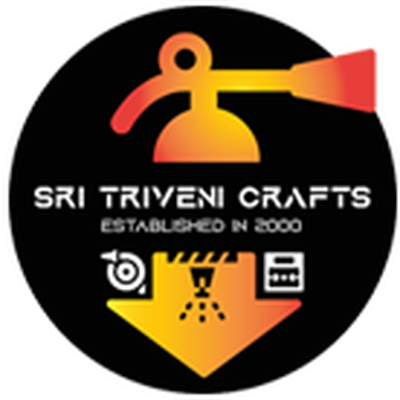Choosing the Right Automatic Fire Suppression System for Your Facility
الجسم
When it comes to protecting your business from potential fire hazards, selecting the appropriate automatic fire suppression system is a critical decision. Every facility has unique requirements depending on its layout, operations, materials, and equipment. At Sri Triveni Crafts, we specialize in guiding businesses toward effective fire protection solutions tailored to their environments.
This blog will help you understand the key considerations when choosing the right fire suppression system, ensuring your facility remains safe, compliant, and operational.
Understanding the Role of Fire Suppression Systems
Fire suppression systems are designed to detect, control, and extinguish fires before they can cause significant damage. Unlike standard fire alarms or extinguishers, these systems are automatic and respond without human intervention, offering round-the-clock protection.
There are various types of fire suppression systems available, and each is suited for different environments. Understanding your facility's risks and requirements is the first step in making the right choice.
Key Factors to Consider
1. Nature of the Facility
The type of facility you operate plays a vital role in determining the best fire suppression system. For example:
-
Data centers need clean agent systems that won’t damage sensitive electronics.
-
Restaurants and commercial kitchens require systems specifically designed to handle grease and oil fires.
-
Manufacturing plants might involve flammable liquids or heavy equipment, necessitating more robust fire suppression solutions.
A detailed risk assessment is essential to match the system to your specific fire hazards.
2. Type of Fire Suppression Agent
There are different types of suppression agents used in modern systems:
-
Clean agents (like FM-200 or Novec 1230): Ideal for areas with electronics or delicate machinery.
-
CO2 systems: Highly effective but not safe for occupied spaces.
-
Water mist systems: Use less water than traditional sprinklers and minimize damage.
-
Wet chemical systems: Designed for kitchen fires involving cooking oils.
-
Dry chemical systems: Effective for flammable liquid fires, often used in industrial settings.
Each agent type has its pros and cons, so it’s crucial to choose one that suits both the fire risk and the operational environment.
3. Response Time and Coverage
Automatic systems are praised for their rapid response. Still, not all systems activate at the same speed or cover the same area. Some systems use heat sensors, others use smoke detection. Consider:
-
How quickly a fire might spread in your facility.
-
The layout and ventilation of the space.
-
Whether a localized or whole-room solution is needed.
A faster response time can significantly reduce damage and downtime.
4. Regulatory Compliance
Your chosen system must comply with local and national fire safety regulations. Sri Triveni Crafts ensures that all our systems meet the necessary certifications and industry standards. Working with an expert provider helps avoid fines or delays caused by non-compliance.
5. Maintenance and Operational Costs
Beyond installation, fire suppression systems require regular inspection and maintenance. Some systems, such as clean agent or inert gas systems, may have higher initial costs but lower long-term maintenance. Consider both your budget and the total cost of ownership.
Consulting a Fire Safety Professional
Choosing the right system is not a one-size-fits-all process. At Sri Triveni Crafts, our experienced team performs in-depth site assessments to recommend the most suitable automatic fire suppression system for your facility. We take into account the nature of your business, fire risks, building layout, and operational needs to deliver a custom solution.
Benefits of Making the Right Choice
Choosing the right system provides several advantages:
-
Reduced downtime in case of a fire event.
-
Lower insurance premiums due to risk mitigation.
-
Improved safety for staff and customers.
-
Long-term cost savings from minimized damage and maintenance.
Investing in a properly selected fire suppression system protects not only your assets but also the future of your business.
Conclusion
Selecting the right automatic fire suppression system is a critical step in safeguarding your facility, workforce, and operations. With the guidance of experienced professionals like those at Sri Triveni Crafts, you can make an informed decision that aligns with your business's safety goals and compliance needs. Don’t leave fire safety to chance—protect your facility with the right solution from the start.
Frequently Asked Questions (FAQs)
1. How do I know which fire suppression system is right for my facility?
The best way is to conduct a professional fire risk assessment. This helps identify the most suitable system based on your operational environment and fire hazards.
2. Are automatic systems safe for areas with people?
Yes, but it depends on the agent used. Clean agent and water mist systems are safe for occupied areas, while CO2 systems are not recommended for spaces with people.
3. Do fire suppression systems replace fire alarms?
No, they complement them. Fire alarms provide alerts, while suppression systems take immediate action to control or extinguish fires.
4. What’s the typical maintenance schedule for these systems?
Most systems require inspection every six months to a year, depending on the type and local regulations.
5. Is the installation disruptive to daily operations?
Installation is planned to minimize downtime. In most cases, it can be scheduled during non-operational hours to avoid disruptions.








تعليقات